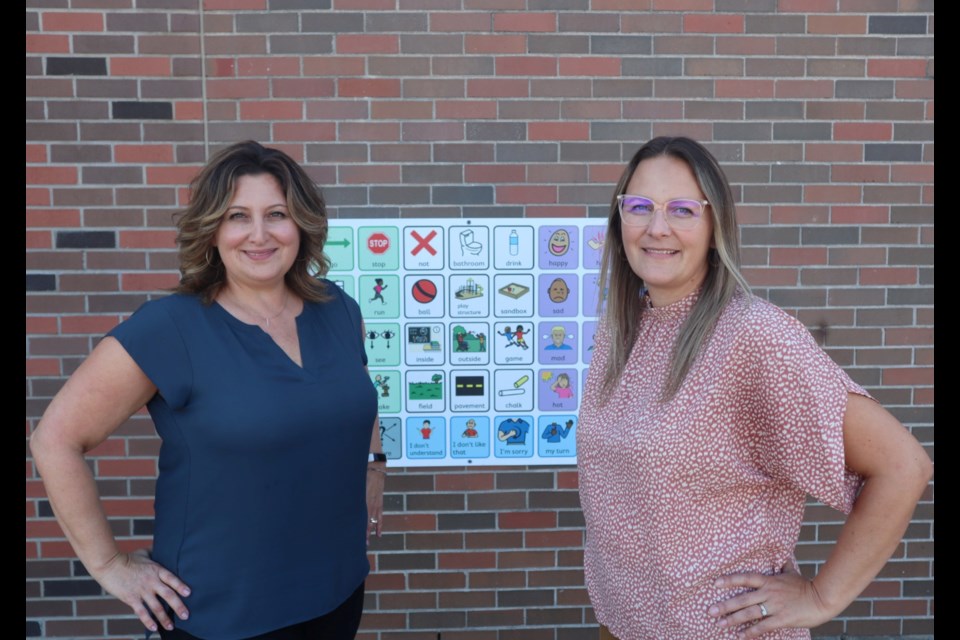The Wellington Catholic District School Board is finding alternative ways for students to communicate outside at recess.
It's implemented communication boards which have images with words students can point to, to explain what they would like to do or how they are feeling.
The idea was sparked when educators were trying to find a way to use tools they had in the classroom to bring outside. Some students have individual communications devices and there are many classroom based communications tools too. WCDSB speech-language pathologists Michelle Chimienti and Jessica Docker thought of bringing a communication board specific to outdoor play as the solution.
Devices like a tablet with similar technology with words and symbols can’t always be used outdoors due to glare, inclement weather like rain and snow, or the worry the devices may get damaged.
The outdoor communication boards were piloted at five elementary schools in June. Those schools being St. Francis of Assisi, St. Patrick, St. Peter, St. Joseph in Guelph and St. Joseph in Fergus. They cost $1,300.
The funding has expanded and now the majority of WCDSB elementary schools have the boards. The additional funding for the remaining elementary schools is $4,500.
The large board placed onto the school wall outside at student height can “provide opportunities for students to practice reading, develop picture-object relationships, and learn about acceptance," said in a WCDSB report.
Pronouns, action words, nouns, emotions, prepositions, core vocabulary, phrases and questions are colour coded in its category.
“So for our non-speaking students, we want to provide them a way to connect with peers, be included in play, and just be part of conversations, both with adults and with kids,” said Chimienti.
Students who are non-speaking, minimally verbal and multilingual can use the board to communicate with their peers, teachers and staff.
“One of our goals, too, is just to normalize using other ways to communicate, and part of that is just having this visible and normalizing that you know different people might communicate in different ways, and educating others about what that might look like,” said Docker.
Chimienti and Docker got to see the boards in action at St. Patrick. There is a board in the main recess area outside at the school and one in the outdoor area for Kindergarten students.
“So actually seeing teachers go up and facilitate that, and watching other kiddos bring a friend over. So part of it is through that capacity, like its real life, naturalistic observations, which have been really exciting to see,” said Chimienti.
At the board’s Professional Activity Day on Sept. 3, Docker said education assistants and child and youth workers shared their experiences with the students using the boards. There was a student who showed their friends how to use the board, with the friends sitting down in front of it almost reflecting a classroom like setting.
Through an app called TD Snap, Chimienti and Docker chose the images and words for the board. The app has tools to help peopling use their eyes, fingers and other body parts to communicate by way of the communication board pages.
“I think we've seen a number of different outdoor communication boards in the community, even locally but we did try to be very specific in targeting vocabulary that involved outdoor play or requests that were related to outdoor conversations,” said Chimienti.
Words and symbols like sandbox, play structure and game are included on the board.
“For me, the biggest goal is just that they're being used and helping students also feel more included in some of that outdoor play too,” said Docker.
